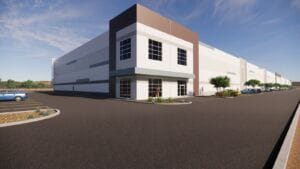The level of quality of a paintwork will depend on how thoroughly a surface is prepared before painting. Because of this, skilled finishers use sandblasting methods to prepare a surface for painting. Abrasive substances, including steel grit, glass beads, acrylic, and fine sand, are thrust violently onto an object’s surface to remove flaws like old paint, rust, filth, and oil. Sandblast works usually occur in a sandblast cabinet or a sandblast booths.
Sandblasting is known to offer several benefits. These are strong enough to make this method quite popular in recent years. Many studies have come forward that gauge the pre-treatment effects of sandblasting.
Below are the most prominent advantages offered by sandblasting.
It Prepares Metal Surfaces For Coating Application Efficiently
Goods, especially metal products, gain appeal from a professional finish. Decoration and protection are the two primary purposes of coating. Due to improved adherence, a paint job will be significantly more successful on a rugged surface. The coating will be durable and safeguard the metal product, lengthening its useful life.
Scuffing a metal surface removes contaminants like oil and rust that could degrade the coating’s final quality. Powder coating and liquid coating both benefit significantly from sandblasting. Using these services before applying the final finish is preferable if you produce metal products.
It Works Very Fast
When you opt to scuff, there is no requirement for elaborate preparations involving harsh chemicals and thorough cleaning. Sandblasting equipment streamlines and expedites the procedure. The sandblaster may be operated by one person or may be automated, which lowers labor costs.
Additionally, cleanup is simple after the sandblasting process is finished. It would take longer to complete a project if you had to scratch metal manually with sandpaper. Except for the sandblasting grit, there isn’t much waste to gather in the sandblasting booth. Glass beads and other sandblasting components can sometimes be recycled.
Safer And Less Wasteful
The majority of sandblasting’s abrasives, including glass beads, are non-toxic. Because they are recyclable, non-toxic materials are used by the majority of skilled finishers. The only aspect of sandblasting that could be harmful to individuals is the dust that is created. It might include hazardous silica, which is known to induce lung conditions. However, businesses dress their employees in protective gear to prevent them from breathing in dangerous dust. Additionally, the entire sandblasting procedure is performed in a well-ventilated booth.
Cost-Effective
All you need to scuff a surface is a sandblaster and abrasive materials. You won’t incur any more beginning fees once your sandblasting booth is set up, along with purchasing the sandblasting equipment and safety gear.
When compared to other solutions like laser cleaning, sandblasting is a terrific value for companies. The majority of the abrasive materials used in the process are recyclable and easily accessible, which is another cost-benefit. Sandblasting also requires less time, which enables producers to work on more units.
Need Minimal Equipment
Opting for sandblast booths has the benefit of requiring less machinery than other processes. A blaster is the only tool necessary for the procedure. Therefore little equipment is employed overall. This consists of a blasting pot, nozzle, and air compressor. This also makes cleaning up after the equipment much more effective.
Maintenance expenses are significantly decreased because less equipment is used. Sandblasting makes cleanup simpler because the dust is captured by a dust collector and abrasive material is easy to collect with an engineered media reclaiming system excavated into the floor where the sandblasting work takes place.




